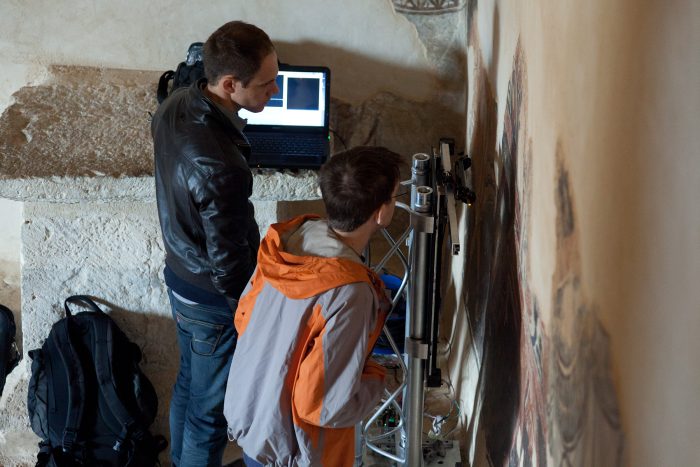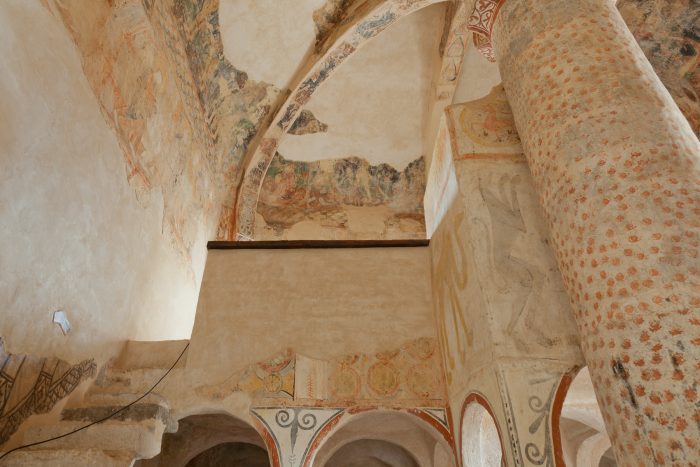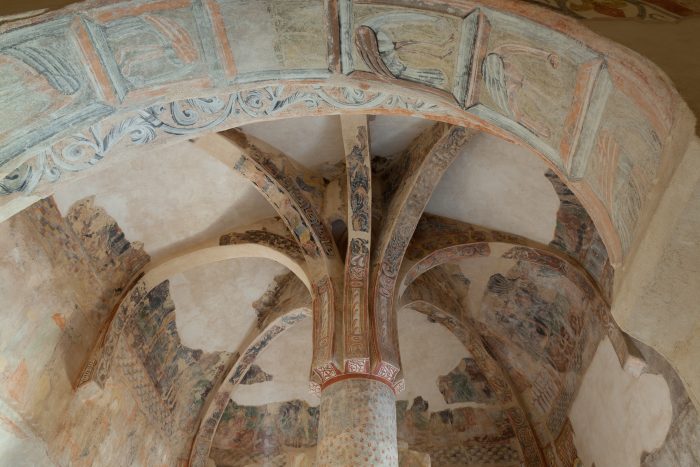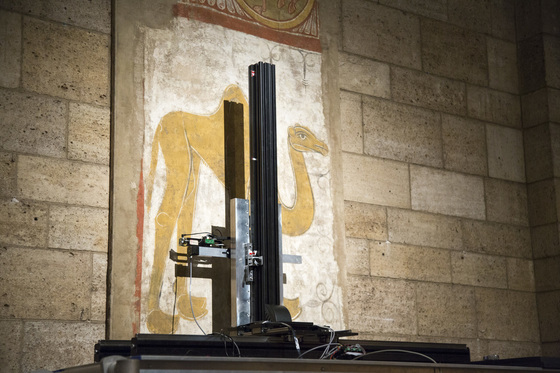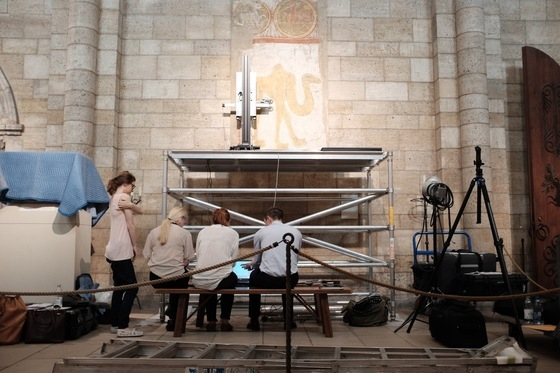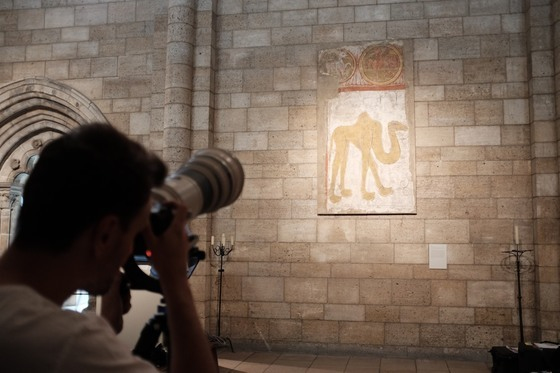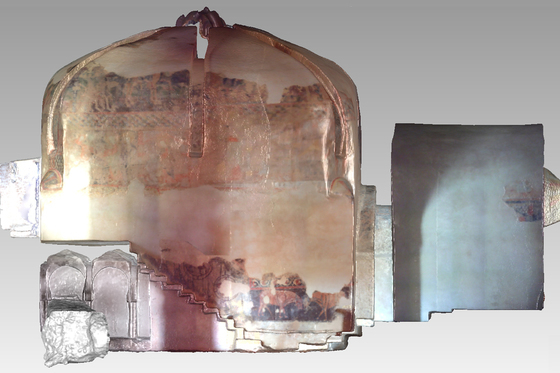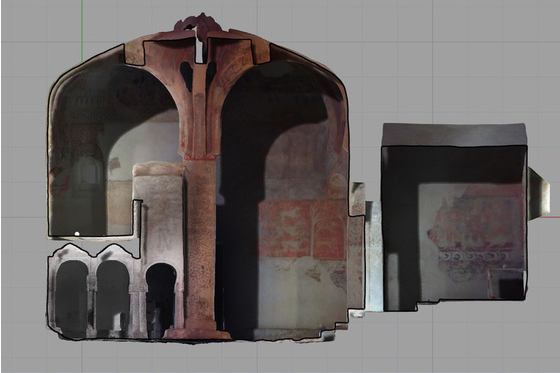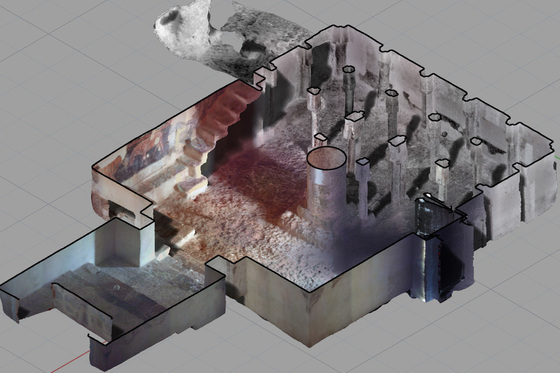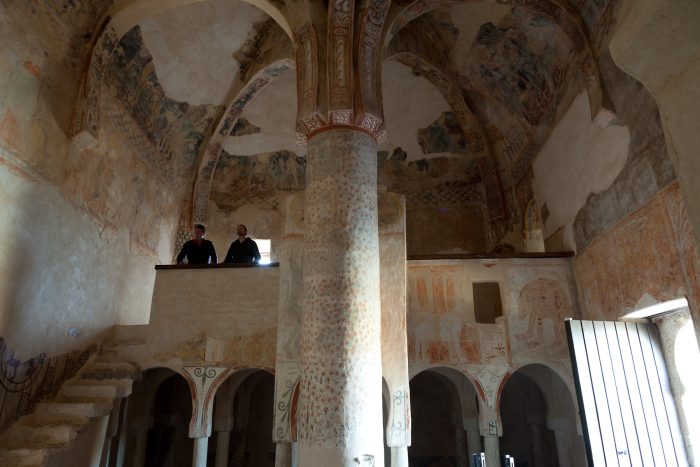
The team inside San Baudelio © Factum Arte
San Baudelio de Berlanga is an isolated, rural sanctuary that predates the town of Casillas de Berlanga, two kilometres to the northwest. Long thought to be built by a Mozarabic community during the late 10th or early 11hth centuries, its date of foundation and patronage are still debated. Its chapel is considered one of the best examples of Sorian pre-Romanesque architecture, and the contrast between the sanctuary’s simple exterior and the extraordinarily colourful interior fascinated writers and archaeologists since the building’s rediscovery in 1884.
Despite the building being declared National Heritage in 1917, the owners managed to legally sell the paintings to Italian antique dealer Leone Levi. In July 1926, 24 mural paintings were physically removed from the walls of San Baudelio using the ‘strappato’ method. While 23 made their way to New York via London – where they were mounted on canvas and framed – the fate of the 24th painting is today unknown.
Two paintings and a border fragment were acquired by the Museum of Fine Arts in Boston, six were exchanged by the Metropolitan Museum in New York with the Museo del Prado in Madrid (where they remain today). Ten other fragments were sold to the Metropolitan Museum, the Cincinnati Art Museum and the Indianapolis Museum of Art between 1959 and 1961. The remaining four are still considered lost.
The recording and digital restoration
Anna Paola Ferrara talks about the process and protocols of creating a non-contact digital restoration
In 2013, Factum Arte and Factum Foundation began, with the permission of the Museo Numantino de Soria (now responsible for the Hermitage of San Baudelio) and the Mayor of Berlanga del Duero, to record the interior of the hermitage in high resolution using a LiDAR scanner and photogrammetry.
During the graduate course ‘Preservation Technology’ taught by Adam Lowe and Carlos Bayod Lucini between September and October 2016, students from Columbia University were trained in the use of the Lucida 3D Scanner, composite colour recording and photogrammetry, recording the fragments that are currently within the collection of the MET Cloisters before travelling to San Baudelio to also record the interior walls of the cloisters and their surface.
The course and fieldwork experience explored the possibilities offered by new technology in the preservation of cultural heritage. As part of Factum Foundation’s ‘learning-by-doing’ approach, the students were trained in the use of 3D scanning, photogrammetry and printing technologies, and applied the training over the course of the project.
The course focused on an experimental preservation treatment for the extensively damaged frescoes that decorate the church of San Baudelio in Casillas de Berlanga.
Led by Factum Arte’s Anna Paola Ferrara, the students then digitally reassembled the data of the recorded fragments and proposed a digital restoration of the painted walls of the chapel. Primary sources and extensive research on materials and techniques informed the process, which included reconstructing the missing areas by digitally reintegrating images or re-drawing them according to photographic evidence.
During the course of the semester, the students explored advanced technologies of digital preservation technologies and their application in fieldwork. The students were trained in using 3D scanning, photogrammetry and printing technologies and proposed an experimental preservation treatment for the Chapel of San Baudelio in Casillas de Berlanga.
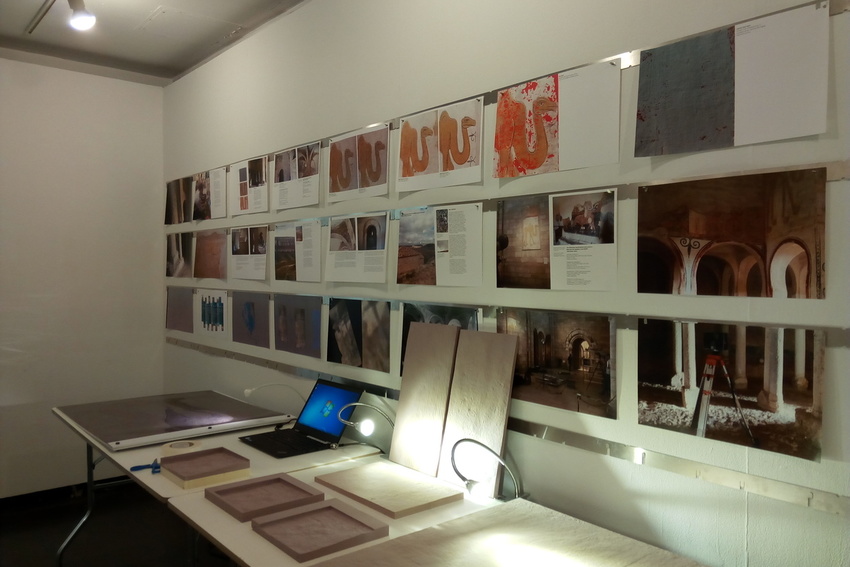
The students presented an exhibition at the GSAPP campus explaining the recording process and re-materialisation techniques
Rematerialising the painted chapel?
With high-resolution data already captured, photographic evidence gathered and examples of digital restoration at hand, the possibility to physically recreate the chapel of San Baudelio as it was before the removal of its frescoes is very real.
San Baudelio presents a fascinating case study at the nexus of issues regarding removal, restoration, and interpretation. Today, it is an historical monument rather than a church. It has been subject to heavy campaigns of restoration after 2000, which has altered both the exterior and interior of the church. With an extensive amount of frescoes now part of collections around the world, reintegrating them in the building is not a viable option.
A recreation of the building, proposed as a travelling exhibition, could present and explore this fascinating history of dramatic change, with funds redirected to the guardians of the site to ensure the preservation of San Baudelio. Further dissemination on the paintings could also help with finding the missing fragments.
Factum Foundation is not new to such ambitious projects. The facsimile of the Burial Chamber of Tutankhamun, the digital restoration and recreation of two rooms from the Tomb of Seti I or the project carried out with the vandalised Sacred Cave of Kamukuwakà demonstrate that such projects are able to attract a vast audience and contribute to the preservation of the original.
If you are interested in making this travelling exhibition possible by donating funds or offering a cultural institution sponsorship, please write to info@factumfoundation.org.



